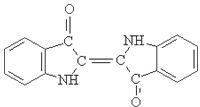Production Processes and Innovations in Sulphur Black Manufacturing Industry
The Sulphur Black Factory A Vital Component of the Textile Industry
In the complex world of textile manufacturing, the dyeing process plays a crucial role in determining the quality, appearance, and longevity of textiles. Among the various dyes used in the industry, sulphur black holds a special place due to its unique properties and the rich colors it imparts to fabrics. The sulphur black factory is essential for producing this dye, supporting the textile industry while also raising questions about sustainability and environmental impact.
Sulphur black is one of the oldest and most widely used dyes in the textile industry, particularly known for its deep black color and excellent colorfastness. This dye is primarily used on cotton and other cellulosic fibers, yielding fabrics that are not only visually appealing but also durable over time. The dyeing process involves a series of chemical reactions that transform sulphur into a black dye. The production of sulphur black typically involves converting elemental sulphur into a soluble form, which is then reacted with various compounds to produce the dye.
A sulphur black factory begins with the careful handling and processing of raw materials. The primary ingredient, sulphur, is often sourced from natural deposits and requires specialized treatment to ensure high purity levels. Once processed, the sulphur is chemically treated to create the dye. This process may involve the use of other chemicals, such as sodium sulfide, to facilitate the transformation of sulphur into a dye that can be effectively utilized in textile applications.
One of the significant advantages of sulphur black dye is its cost-effectiveness. Compared to other black dyes, sulphur black is relatively inexpensive to produce, making it a popular choice among manufacturers. Additionally, it offers good wash and lightfastness properties, which are crucial for fabrics that endure multiple washes and exposure to light over time. These qualities make sulphur black an ideal choice for various applications, including clothing, upholstery, and other textiles.
sulphur black factory

However, the production of sulphur black is not without environmental concerns. The chemicals used during the manufacturing process have the potential to generate harmful byproducts, which can threaten local ecosystems if not managed properly. Factories must adhere to stringent regulations regarding waste management and emissions to minimize their environmental footprint. Innovations in technology and administrative practices have led to more sustainable production methods, aimed at reducing the negative impacts associated with dye manufacturing.
In recent years, there has been a growing shift towards sustainability in the textile industry, with many manufacturers seeking eco-friendly alternatives to traditional dyes. This trend has influenced sulphur black manufacturers to explore sustainable practices, such as using biodegradable materials and adopting closed-loop systems that minimize waste.
Moreover, the rise of consumer awareness regarding ethical and sustainable sourcing of materials has prompted factories to adopt greener practices. By investing in environmentally friendly technologies, sulphur black factories can not only ensure compliance with environmental regulations but also meet the increasing demand for sustainable textiles.
In conclusion, the sulphur black factory stands as a critical player in the textile industry, offering cost-effective and durable dye solutions. While it plays a significant role in creating deeply colored fabrics, it also faces challenges related to environmental sustainability. As the industry evolves, the sulphur black factory must adapt by embracing eco-friendly practices and innovations to maintain its viability and support a more sustainable future for textiles. Through responsible production, these factories can continue to contribute to the vibrant world of fabric while minimizing their impact on the planet.
-
The Timeless Art of Denim Indigo Dye
NewsJul.01,2025
-
The Rise of Sulfur Dyed Denim
NewsJul.01,2025
-
The Rich Revival of the Best Indigo Dye
NewsJul.01,2025
-
The Enduring Strength of Sulphur Black
NewsJul.01,2025
-
The Ancient Art of Chinese Indigo Dye
NewsJul.01,2025
-
Industry Power of Indigo
NewsJul.01,2025
-
Black Sulfur is Leading the Next Wave
NewsJul.01,2025

Sulphur Black
1.Name: sulphur black; Sulfur Black; Sulphur Black 1;
2.Structure formula:
3.Molecule formula: C6H4N2O5
4.CAS No.: 1326-82-5
5.HS code: 32041911
6.Product specification:Appearance:black phosphorus flakes; black liquid

Bromo Indigo; Vat Bromo-Indigo; C.I.Vat Blue 5
1.Name: Bromo indigo; Vat bromo-indigo; C.I.Vat blue 5;
2.Structure formula:
3.Molecule formula: C16H6Br4N2O2
4.CAS No.: 2475-31-2
5.HS code: 3204151000 6.Major usage and instruction: Be mainly used to dye cotton fabrics.

Indigo Blue Vat Blue
1.Name: indigo blue,vat blue 1,
2.Structure formula:
3.Molecule formula: C16H10N2O2
4.. CAS No.: 482-89-3
5.Molecule weight: 262.62
6.HS code: 3204151000
7.Major usage and instruction: Be mainly used to dye cotton fabrics.

